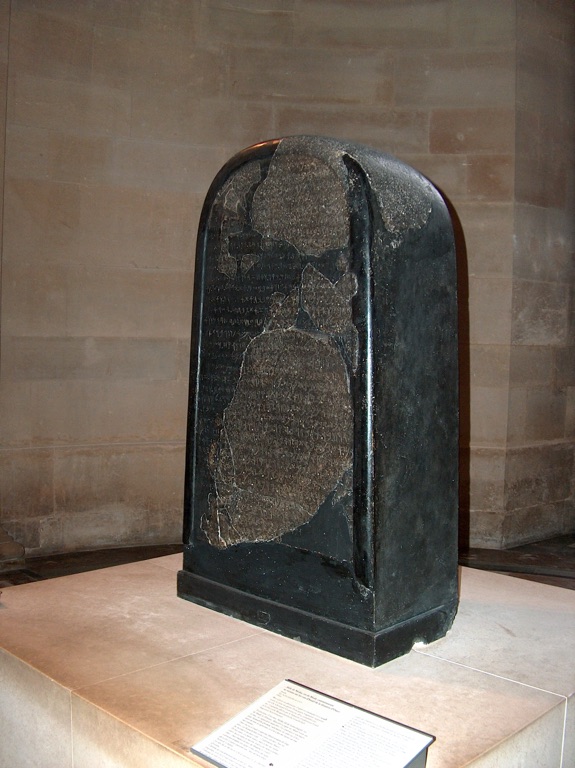The Mesha Stele, also known as the Moabite Stone, is a significant archaeological find from the ancient Near East. Discovered in 1868, it is an inscribed stone erected by King Mesha of Moab in the 9th century BCE. The stele boasts of Mesha’s victories over the Israelites and his building projects. It is particularly famous for its mention of the “House of David,” providing one of the few extrabiblical references to the Davidic dynasty. The artifact is a crucial source for the study of the Moabite language and the history of the region.
Moabite Kingdom
The Moabite Kingdom, nestled in the mountainous highlands east of the Dead Sea, was a significant ancient Near Eastern civilization, flourishing from the 13th century BC until its decline around the 6th century BC. This civilization, known from both archaeological evidence and references in ancient texts, including the Hebrew Bible, carved out a niche for itself in the tumultuous landscape of the ancient Near East.
One of the major moments in the history of the Moabite Kingdom was its conflict with the Israelite kingdoms, as depicted in the Hebrew Bible. The Moabites were often in a state of war or tension with their Israelite neighbors, with notable episodes including King Eglon’s oppression of Israel in the Book of Judges and King Mesha’s rebellion against Israelite domination, famously recorded on the Mesha Stele in the 9th century BC. This stele not only provides invaluable insights into Moabite history but also mentions the Moabite god Chemosh, to whom King Mesha attributed his victories.
The religion of the Moabites was polytheistic, with Chemosh being the chief deity. The worship practices and pantheon bore similarities to those of other Canaanite religions, with evidence suggesting that they also revered gods such as Baal, Ashtoreth, and perhaps others mentioned in various ancient texts. Religious practices likely included animal sacrifice and possibly other rites similar to those of their neighbors, though specific details remain elusive due to the limited archaeological evidence specific to Moabite religious practices.
Social and daily life in the Moabite Kingdom would have been heavily influenced by its agrarian economy and the harsh, arid environment in which it was situated. Agriculture, animal husbandry, and trade, especially in salt and minerals from the Dead Sea, were vital. The society was hierarchical, with a king at the top, followed by a class of officials and priests, and then commoners, including farmers, artisans, and traders. Family and tribal affiliations played a significant role in social structure and daily life.
The Moabite Kingdom was ruled by a succession of kings, of whom King Mesha is the most well-documented, thanks to the Mesha Stele. This stele, discovered in the 19th century AD, is one of the most important pieces of Moabite history, providing a rare first-person account of a Moabite king’s reign. Unfortunately, the names and deeds of other Moabite rulers are less well-known, with only a few being mentioned in passing in external sources like the Bible.
The Moabites were originally from the region they inhabited, emerging as a distinct group in the Late Bronze Age. Their language, Moabite, was a Canaanite dialect, closely related to Hebrew, which suggests long-standing cultural and ethnic continuity in the region. Their written records, though scarce, provide a glimpse into the life and society of this ancient people.
Throughout its history, the Moabite Kingdom engaged in various wars and battles, not only with the Israelites but also with other neighboring states. The Assyrian Empire, a dominant power in the region, eventually subjugated Moab in the 8th century BC. This subjugation marked the beginning of the end for Moabite independence, leading to its decline and eventual absorption into the empires that succeeded Assyria.
The Moabite Kingdom’s legacy is a testament to the resilience and complexity of ancient civilizations in the Near East. Despite the scarcity of direct records, the glimpses we have into their world through archaeology and the accounts of others offer a fascinating picture of a people who navigated the challenges of their time with tenacity and ingenuity.

